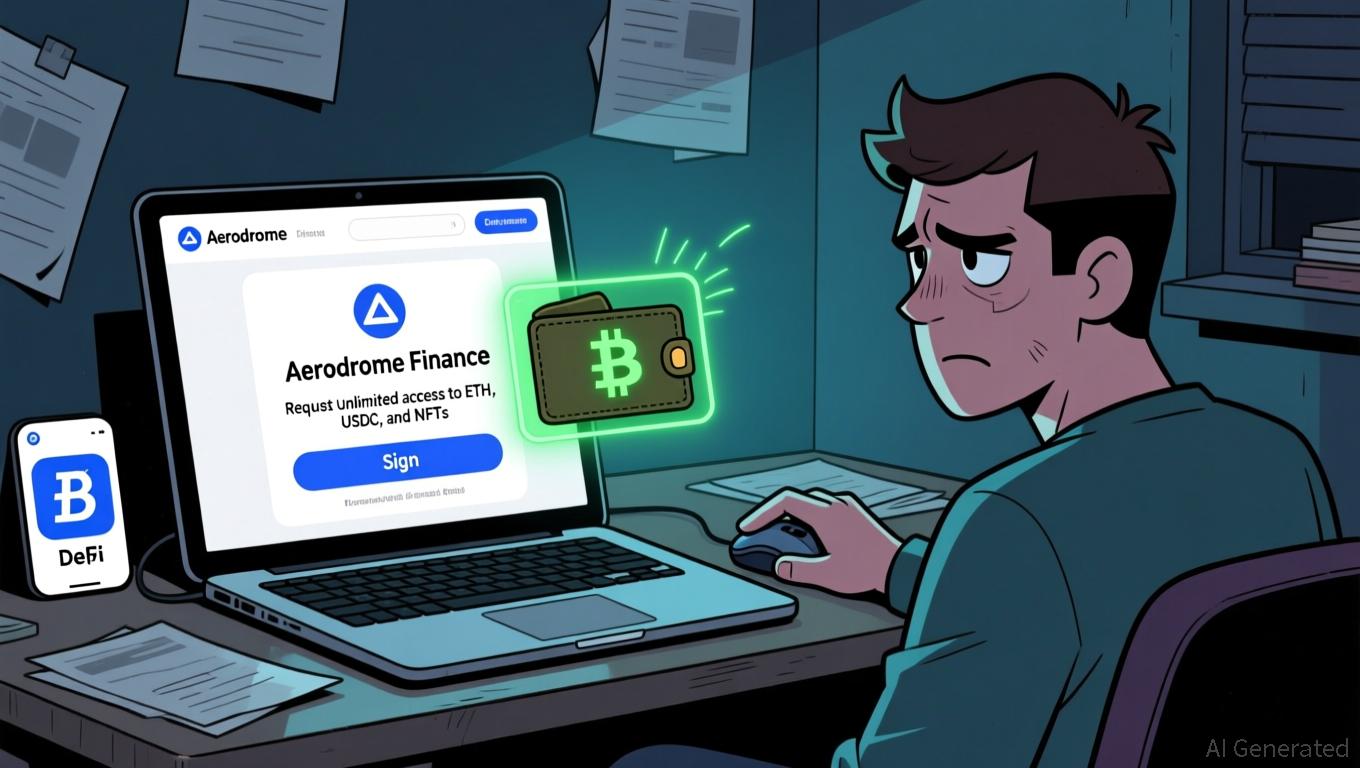Vitalik Buterin's Latest Advances in ZK Technology and Their Impact on the Crypto Ecosystem
- Vitalik Buterin's ZK advancements resolve Ethereum's scalability-privacy trilemma, enabling 43,000 TPS with near-zero fees via GKR protocol. - Kohaku framework introduces modular privacy tools like Railgun, making confidential transactions default for Ethereum wallets. - ZK rollups (zkSync, StarkNet) now hold $3.5B TVL, driven by institutional adoption for RWA tokenization and confidential settlements. - Regulatory clarity and Ethereum's zkEVM integration position ZK as core infrastructure, with 70% lowe
Vitalik Buterin’s ZK Innovations: Advancing Scale and Privacy
Buterin’s research on the GKR protocol has transformed the cost structure of ZK verification. By cutting verification expenses by as much as 15 times in theory and 10 times in real-world scenarios, GKR has empowered platforms like ZKsync to reach 43,000 transactions per second (TPS) with minimal fees
In addition to scaling, Buterin has led efforts to combine ZK proofs with multi-party computation (MPC), fully homomorphic encryption (FHE), and trusted execution environments (TEE). These integrations boost security for solutions like private voting and confidential state queries

ZK’s Journey: From Specialized Use to Institutional Standard
The uptake of ZK technology has surged between 2023 and 2025, propelled by improvements in scalability and growing institutional interest. The Atlas Upgrade for ZKsync in October 2025 delivered 15,000 TPS and seamless Ethereum compatibility, paving the way for real-world asset (RWA) tokenization
The total value locked (TVL) in ZK rollups such as zkSync, StarkNet, and Scroll has now surpassed $3.5 billion, signaling strong institutional trust in ZK’s cost-effectiveness. For example, transaction fees for high-frequency trading on ZK platforms have fallen by 70% compared to 2023
The Ethereum Foundation’s focus on zkEVM integration at the Layer 1 level has further established ZK rollups as the go-to scaling method. Legislative clarity from the U.S. GENIUS and CLARITY Acts has also eased regulatory concerns, setting the stage for ZK rollups to become the backbone of blockchain infrastructure
Investment Outlook: ZK Technologies as a Strategic Long-Term Bet
The intersection of technical progress and institutional embrace makes a strong argument for ZK technologies as a promising long-term investment. Key factors include:
- Scalability Economics: The near-zero transaction costs enabled by ZK rollups make them ideal for widespread applications, from DeFi to tokenizing real-world assets.
- Privacy as a Standard: Kohaku’s modular system and tools like Railgun are poised to become mainstream for wallets, driving further adoption within Ethereum’s network.
- Institutional Partnerships: Collaborations with established organizations and clearer regulations are pushing ZK use beyond the crypto-native sphere.
- Venture Capital Support: The Ethereum Foundation’s zkEVM initiatives and ongoing VC investments in ZK startups point to continued innovation.
Nevertheless, challenges persist. ZK technology is still maturing, and competition from other scaling solutions, such as optimistic rollups, could impact its growth. Shifts in regulation or technical hurdles may also slow broader implementation.
Conclusion
Vitalik Buterin’s ZK advancements have not only tackled Ethereum’s scaling limitations but have also reimagined what’s possible for blockchain privacy and security. As ZK rollups reach institutional scale and regulatory frameworks become clearer, the long-term investment case for ZK technology grows stronger. For those looking to invest, the focus should be on platforms and frameworks that align with Ethereum’s vision, such as
Disclaimer: The content of this article solely reflects the author's opinion and does not represent the platform in any capacity. This article is not intended to serve as a reference for making investment decisions.
You may also like
Ethereum News Today: Ethereum Faces $2,800 Test—Will It Surge to $3,000 or Retreat to $2,300?
- Ethereum tests $2,800 resistance, key threshold for November, with potential to rebound toward $3,000 if breakout succeeds. - Recent $55.7M inflow into ETH ETFs, led by Fidelity’s FBETH, signals cautious institutional interest after nine-day outflow streak. - Technical indicators show improved momentum with RSI rebound and MACD stabilization, but $2,800 remains critical for further gains. - Derivatives data and Coinbase’s ETH-backed lending expansion hint at conditional recovery, though liquidation risks

Ethereum Updates: Centralized DNS Compromise Highlights DeFi Weaknesses as Aerodrome Suffers $1 Million Loss
- Aerodrome Finance suffered a DNS hijacking attack on Nov 22, 2025, redirecting users to phishing sites that siphoned over $1M in assets through deceptive transaction approvals. - Attackers exploited vulnerabilities in centralized domain registrar Box Domains, forcing users to approve unlimited access to NFTs and stablecoins via two-stage signature requests. - The protocol shut down compromised domains, urged ENS-based access, and revoked recent token approvals, marking its second major front-end breach i

Trump and Mamdani’s Bet on Affordability: Uniting Opposing Ideologies
- Trump and Mamdani's Nov. 21 meeting highlights clashing ideologies on affordability and governance, with New York's $1.286T economy at stake. - Both leaders share focus on cost-of-living crises but differ sharply on solutions, with Trump threatening federal funding cuts and Mamdani advocating rent freezes. - Experts see the dialogue as critical for redefining strained city-federal relations, emphasizing urban centers' role as economic engines. - Mamdani's corporate tax proposals clash with Trump's deregu

Bitcoin News Update: Navigating Crypto’s Balancing Act to Steer Clear of 2018’s Downturn as Global Economic Conditions Evolve
- Crypto markets avoid 2018-style collapse as macro-driven cycles and reduced speculation prolong volatility, per Lyn Alden. - Fed policy uncertainty and leveraged ETF launches highlight risks and innovations amid $2.2B crypto outflows and $914M liquidations. - MSTR's BTC gains and Gunden's $1.3B sell-off reflect divergent investor strategies, while Munari's Solana project targets long-term adoption. - Analysts split between 65-70% Bitcoin retracement forecasts and prolonged cycles driven by institutional
